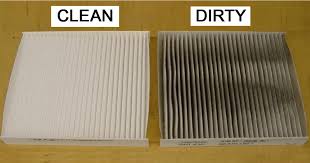
Your HVAC filter is one of the most important—and most overlooked—components of your home comfort system. In Texas, where dust storms, cedar pollen, and year-round HVAC operation create unique challenges, choosing the right filter can mean the difference between clean, healthy air and expensive system problems.
Not all filters are created equal, and what works in Minnesota might not be ideal for your Texas home. This comprehensive guide will help you understand filter types, MERV ratings, and replacement schedules specifically for Texas conditions.
Why Filter Choice Matters More in Texas
Texas homes face unique air quality challenges that make proper filtration crucial:
- Extended HVAC Operation: Your system runs 6-8 months annually, circulating air constantly
- High Dust Levels: West Texas wind events and construction dust create heavy particulate loads
- Cedar Fever Season: Microscopic pollen particles can overwhelm inadequate filters
- Humidity Variations: Changing moisture levels affect filter performance and microbial growth
- Pet Dander and Allergens: Indoor pets combined with outdoor allergens create year-round challenges
Texas Fact: During peak cedar fever season (December-March), pollen counts can exceed 5,000 particles per cubic meter. A quality filter is your first line of defense against these allergens entering your home.
Understanding MERV Ratings
MERV (Minimum Efficiency Reporting Value) ratings measure a filter's ability to capture particles. Higher numbers mean better filtration, but also more airflow restriction:
- MERV 1-4: Basic protection, captures large particles only
- MERV 5-8: Better residential protection, captures dust, pollen, and pet dander
- MERV 9-12: Superior residential protection, captures fine particles and bacteria
- MERV 13-16: Hospital-grade filtration, captures smoke and virus-sized particles
- MERV 17-20: HEPA filters, captures 99.97% of particles 0.3 microns and larger
For Texas Homes: MERV 11-13 provides the best balance of filtration and airflow for most residential systems.
Filter Types Compared
Fiberglass Filters
Basic spun glass filters that provide minimal protection but maximum airflow.
Pros
- Lowest cost
- Maximum airflow
- Protect HVAC equipment
Cons
- Poor air quality improvement
- Won't capture pollen or dust
- Not suitable for Texas conditions
Pleated Filters
Folded synthetic or cotton media that provides good balance of filtration and airflow.
Pros
- Good particle capture
- Reasonable cost
- Available in various MERV ratings
- Ideal for Texas homes
Cons
- Higher cost than fiberglass
- May restrict airflow if too high MERV
Washable/Permanent Filters
Reusable filters made from foam, aluminum, or electrostatic materials.
Pros
- Long-term cost savings
- Environmentally friendly
- No replacement purchases
Cons
- High upfront cost
- Require regular cleaning
- Lower filtration efficiency
- Not ideal for Texas dust levels
High-Efficiency Filters
Advanced filtration media that captures very small particles including bacteria and smoke.
Pros
- Excellent particle capture
- Captures bacteria and viruses
- Ideal for severe allergies
Cons
- Highest cost
- May restrict airflow
- Requires compatible HVAC system
Texas Filter Replacement Schedule
Texas conditions require more frequent filter changes than manufacturer recommendations. Use this schedule based on your filter type and home conditions:
| Filter Type | Normal Conditions | Texas Dust/Pollen Season | Pets or Allergies |
|---|---|---|---|
| Fiberglass (MERV 1-4) | 30 days | 15-20 days | 15 days |
| Pleated (MERV 5-8) | 60-90 days | 30-45 days | 30 days |
| Pleated (MERV 9-12) | 90 days | 45-60 days | 45 days |
| High-Efficiency (MERV 13+) | 90-120 days | 60-90 days | 60 days |
Pro Tip: During cedar fever season (December-March), check your filter monthly regardless of type. High pollen counts can clog filters much faster than normal.
Signs You Need to Change Your Filter
Don't rely solely on schedules. Watch for these warning signs:
- Visible dirt and debris: Filter surface appears gray or brown
- Reduced airflow: Weak air coming from vents
- Increased dust: More dust settling on surfaces
- System cycling: HVAC turning on and off frequently
- Higher energy bills: System working harder due to restriction
- Allergy symptoms: Worsening indoor air quality
Choosing the Right Filter for Your Texas Home
Standard Texas Home: MERV 11 pleated filter provides excellent protection without excessive airflow restriction.
Severe Allergies: MERV 13 filter captures smaller allergens but verify your system can handle the restriction.
Budget-Conscious: MERV 8 pleated filters offer good protection at lower cost, but require more frequent changes.
High-Dust Area: Consider washable pre-filters combined with pleated filters to extend main filter life.
Not Sure Which Filter is Right for You?
Our HVAC experts can recommend the perfect filter type and replacement schedule for your specific system and Texas conditions.
Get Filter Recommendation: (817) 704-0706Installation Tips for Maximum Performance
Check the Arrow: Install filters with airflow arrows pointing toward your unit (away from return air vents).
Proper Fit: Ensure filters fit snugly without gaps. Air will bypass loose-fitting filters.
Single Filter Only: Don't stack multiple filters—this restricts airflow and reduces efficiency.
Clean the Area: Vacuum around the filter slot before installing new filters.
When to Upgrade to Professional Systems
Standard filters may not be enough if you experience:
- Chronic respiratory issues
- Excessive dust despite regular filter changes
- Strong odors throughout the home
- Visible mold growth
- Family members with severe allergies
Professional whole-house air purification systems can provide HEPA-level filtration without airflow restrictions.
The Bottom Line
Your HVAC filter is a small component with a big impact on your family's health, comfort, and system efficiency. In Texas conditions, the right filter choice and regular replacement schedule can:
- Improve indoor air quality significantly
- Reduce allergy and respiratory symptoms
- Extend HVAC equipment life
- Lower energy costs
- Prevent costly system repairs
Don't let a $15 filter cause hundreds of dollars in repairs or health problems. Invest in quality filtration appropriate for your Texas home's specific needs.